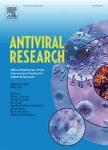版权所有:内蒙古大学图书馆 技术提供:维普资讯• 智图
内蒙古自治区呼和浩特市赛罕区大学西街235号 邮编: 010021

作者机构:Univ Queensland Sch Chem & Mol Biosci Australian Infect Dis Ctr St Lucia Qld 4072 Australia
出 版 物:《ANTIVIRAL RESEARCH》 (抗病毒研究)
年 卷 期:2018年第159卷第0期
页 面:13-25页
核心收录:
学科分类:0710[理学-生物学] 1007[医学-药学(可授医学、理学学位)] 1001[医学-基础医学(可授医学、理学学位)] 10[医学]
基 金:National Health and Medical Research Council (NHMRC) [APP1127916 APP1059794]
主 题:Flavivirus sfRNA Noncoding RNA Subgenomic flaviviral RNA XRN-1 resistance
摘 要:The common feature of flaviviral infection is the accumulation of abundant virus-derived noncoding RNA, named flaviviral subgenomic RNA (sfRNA) in infected cells. This RNA represents a product of incomplete degradation of viral genomic RNA by the cellular 5 -3 exoribonuclease XRN1 that stalls at the conserved highly structured elements in the 3 untranslated region (UTR). This mechanism of sfRNA generation was discovered a decade ago and since then sfRNA has been a focus of intense research. The ability of flaviviruses to produce sfRNA was shown to be evolutionary conserved in all members of Flavivirus genus. Mutations in the 3 UTR that affect production of sfRNAs and their interactions with host factors showed that sfRNAs are responsible for viral pathogenicity, host adaptation, and emergence of new pathogenic strains. RNA structural elements required for XRN1 stalling have been elucidated and the role of sfRNAs in inhibiting host antiviral responses in arthropod and vertebrate hosts has been demonstrated. Some molecular mechanisms determining these properties of sfRNA have been recently characterized, while other aspects of sfRNA functions remain an open avenue for future research. In this review we summarise the current state of knowledge on the mechanisms of generation and functional roles of sfRNAs in the life cycle of flaviviruses and highlight the gaps in our knowledge to be addressed in the future.